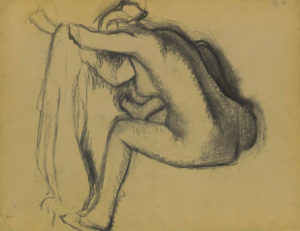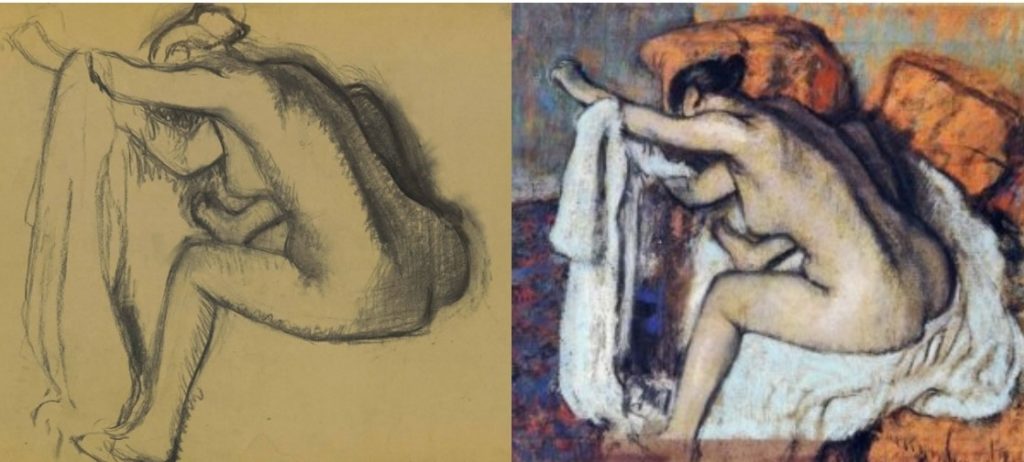The Oglethorpe University Museum of Art has received quite a rare donation: a charcoal sketch. At first glance, the sketch may seem unassuming, however, it is actually an early draft from famous French Impressionist painter Edgar Degas.

Edgar Degas (French 1834-1917), Femme nue assise, s’essuyant, c. 1884, Estate stamp, (Lugt 658), Charcoal on paper, 20″ x 25″, Gift of Drs. Yolanta and Isaac Melamed, Collection of Oglethorpe University Museum of Art
When thinking of Degas, one might immediately recall his ballerinas. His fascination with people and movement led him to create many well-known paintings of these graceful dancers. Degas’ “The Dance Class (La Classe de Dance),” which depicts a candid snapshot of young ballerinas in a dance studio, is among the most recognizable 19th-century paintings.
Later in life, however, Degas also became invested in depicting the female bather. He drew or painted nearly 400 bathers — most in the last 20 years of his career. The sketch that now lives in OUMA’s permanent collection was an important foundation of his prolific bather series. Its form can be seen referenced in many of the final pastels.
“It is also likely that this drawing was, unlike many later compositions, based upon a living model,” says Curator of Collections John Daniel Tilford. “This was something the artist retained for the rest of his life as an important reference point when executing more finished works in colored pastels.”
For Degas, the bather series was an investigation of form. The poses in his pastels challenge the way the body could be depicted; he drew people in private moments and in unnatural positions. This sketch correlates directly with a finished pastel from Degas currently in the collection of the Sao Paolo Museum of Art.
This generous gift to the museum’s permanent collection was given by Drs. Yolanta and Isaac Melamed. Their continued donations over the years have created the core of OUMA’s collection of French 19th-century paintings and have inspired other donors to contribute. Because of the Melamed family and donors like them, OUMA has works from many of the

Left: Sketch in OUMA’s permanent collection, Right: Finished Degas pastel in the collection of the Sao Paolo Museum of Art
principal members of the Impressionist movement, including Renoir, Pissarro, Cezanne, Boudin and now Degas.
“The permanent collection has grown more than 580% over the past 10 years,” says museum director Elizabeth Peterson, “almost entirely through the good will and generosity of our donors. We now have more than 1,025 works of art in the collection.”
Though OUMA cannot yet allow in-person visitors, the current spring exhibition, “Pax Tokugawa: The Japanese Collections of OUMA” can be viewed through the museum’s 360-degree virtual tour. The Degas charcoal is expected to be on view in the next installation of “OUMA Collects: Selections from the Permanent Collection,” opening in fall 2021.

